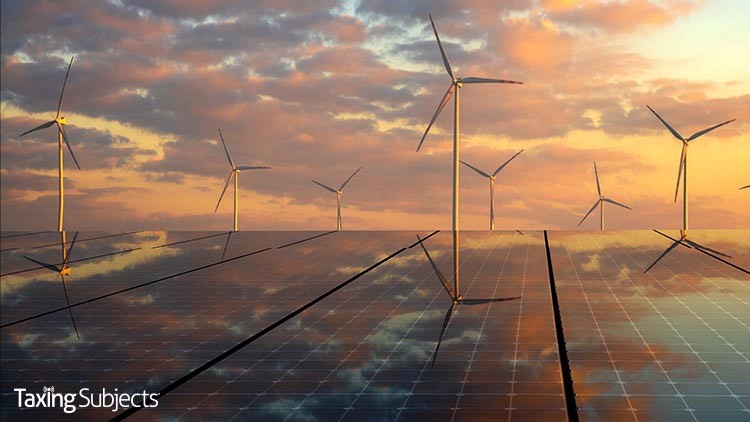
New guidance from the Internal Revenue Service and the Treasury Department is aimed at keeping the lights on at renewable energy projects delayed by the COVID-19 pandemic.
Previous IRS notices gave eligible renewable energy projects a Continuity Safe Harbor, giving the green light to claim the production tax credit and the investment tax credit, as long as the overall project goes on line within a certain period of time.
Under this scenario, the clock starts ticking in the taxable year that construction started.
Unfortunately, there’s a problem.
Even with the recent inroads made against COVID-19, the pandemic has continued to impact construction of renewable energy projects, pushing them farther behind schedule, putting them at risk of missing the Continuity Safe Harbor deadline altogether.
This new guidance delivers relief to renewable energy projects that have been hit by pandemic-driven project delays, allowing them more time to comply with the Continuity Safe Harbor. It also introduces more flexibility for these projects to choose which way to best fulfill the continuity requirement outside of the safe harbor.
How does the safe harbor work?
The changes are laid out in Notice 2021-41. This new guidance gives qualified renewable energy projects a choice of two ways to show the taxpayer’s started construction on the project: the Physical Work Test, or the Five Percent Safe Harbor.
Once construction begins, the project has to make continuous progress toward completion in order satisfy requirements.
If the Physical Work test is used, the project falls under the Continuous Construction Test to show that the project has made continuous progress. With the Five Percent Safe Harbor method, the project is measured under the Continuous Efforts Test.
Notice 2021-41 extends the Continuity Safe Harbor period beyond that announced previously and covers renewable projects that started in 2016 through 2020:
- For projects for which construction began under the Physical Work Test or the Five Percent Safe Harbor in 2016, 2017, 2018, or 2019, the Continuity Safe Harbor is satisfied if the project is placed in service by the end of a calendar year that is no more than 6 calendar years after the calendar year during which construction began; and
- For projects for which construction began under the Physical Work Test or the Five Percent Safe Harbor in calendar year 2020, the Continuity Safe Harbor is satisfied if the project is placed in service by the end of the calendar year that is no more than 5 calendar years after the calendar year during which construction began.
In addition, the notice also gives qualifying projects a kind of escape hatch.
If the Continuity Safe Harbor doesn’t apply to their project, taxpayers can still satisfy the continuity requirement if they can satisfy either the Continuous Construction or the Continuous Efforts Tests.
This provision can be used regardless of the method the taxpayer used when construction commenced.
For more information about tax relief for businesses impacted by the COVD-19 pandemic, see Coronavirus Tax Relief for Businesses and Tax-Exempt Entities.
Source: Treasury, IRS extend safe harbor for renewable energy projects.
